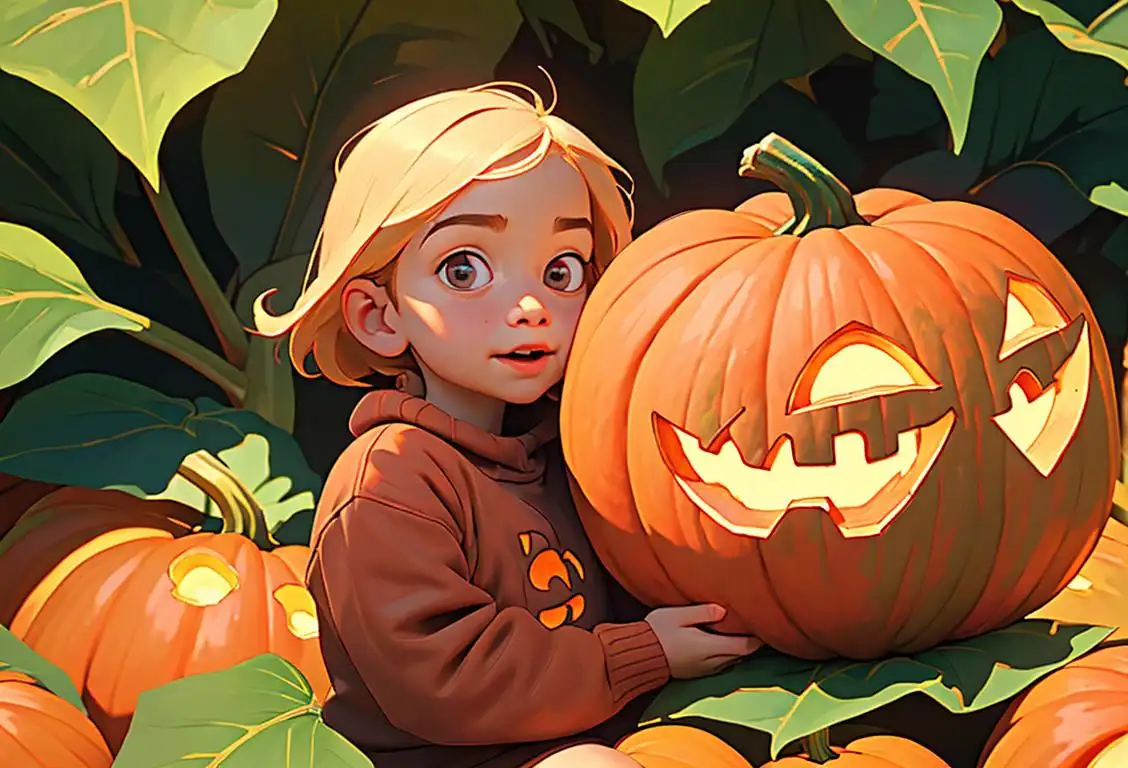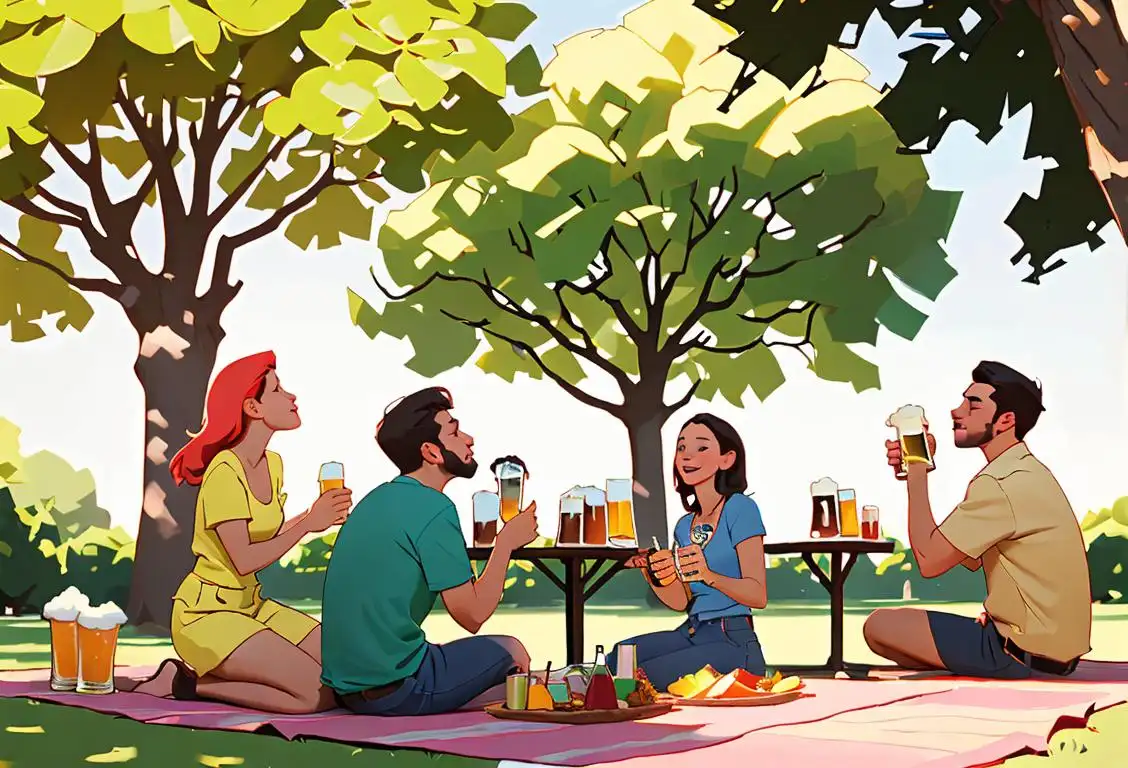National Chocolates Day

Welcome to the delightful world of National Chocolates Day! Get ready for a mouthwatering journey through the rich history and mouthwatering indulgence of everyone's favorite treat. Whether you're a chocoholic or just enjoy the occasional nibble, this day is a must-celebrate for all dessert enthusiasts. So grab your sweet tooth and join us as we dive into the world of chocolate!
When is Chocolates Day?
It's national chocolates day on the 29th November.
A Sweet History of National Chocolates Day
Every year on November 29th, chocolate lovers unite to celebrate National Chocolates Day. This delectable day is dedicated to honoring the sweet confection that has captured our hearts (and taste buds) for centuries. But how did this heavenly treat become such a beloved part of our lives?
The history of chocolate dates back thousands of years to ancient civilizations in Central and South America. The Mayans and Aztecs were the first to discover the cacao tree, which yielded the magical beans used to make chocolate. They believed that chocolate had divine properties and used it for medicinal and ceremonial purposes.
Fast forward to the 16th century when Europeans first encountered chocolate during the Spanish conquests. The Spanish explorer Hernán Cortés was introduced to chocolate by the Aztecs and brought it back to Europe. It quickly gained popularity among the European elite, who enjoyed it as a luxurious and exotic delicacy.
Throughout the centuries, chocolate continued to evolve, and by the 19th century, it became widely accessible to the general public. The invention of the cocoa press by Conrad Van Houten in 1828 drastically changed the chocolate-making process and made it easier to produce affordable chocolate.
In the 20th century, chocolate became a staple in many households and an essential ingredient in various desserts and treats. From chocolate bars to truffles, hot cocoa to chocolate-covered strawberries, the possibilities are endless when it comes to enjoying this delectable delight.
How to Celebrate National Chocolates Day
Now that you know a bit about the history, it's time to indulge in some chocolatey goodness on National Chocolates Day! Here are a few ideas to get you started:
- Treat yourself to your favorite chocolate bar or gourmet truffles.
- Bake a batch of homemade brownies or chocolate chip cookies.
- Host a chocolate tasting party with friends and family.
- Create your own custom chocolate bar with all your favorite toppings and flavors.
- Visit a local chocolatier and explore their delicious offerings.
Remember, National Chocolates Day is all about savoring the sweet moments and treating yourself to a little indulgence. So go ahead, embrace your chocolate cravings and celebrate this delectable day!
History behind the term 'Chocolates'
1500 BC
Ancient Beginnings
The history of chocolates can be traced back to ancient civilizations. The Mayans and Aztecs of Mesoamerica are believed to be the first to discover the delicious qualities of chocolate. They cultivated cacao trees in their tropical forests and used the beans to prepare a bitter beverage called 'xocoatl' which was reserved for nobles and special occasions.
1500 BCE
The Ancient Beginnings
The history of chocolates can be traced back to as early as 1500 BCE when the Olmecs, a ancient civilization in Mesoamerica, were believed to have discovered the cacao tree and its delicious fruit. The Olmecs cultivated the cacao tree and harvested its beans, which were then processed to create a bitter drink called 'xocoatl', considered a luxury beverage reserved for royalty and elites.
600 CE
From Olmecs to Mayans
In 600 CE, the Mayans inherited the knowledge and cultivation of cacao from the Olmecs. They not only continued to consume cacao as a beverage but also incorporated it into religious rituals and celebrations. Mayans believed that cacao had divine properties and considered it the food of the gods.
1492 AD
Introduction to Europe
Chocolate made its way to Europe when Christopher Columbus encountered cacao beans during his exploration of the Americas. However, it wasn't until 1528 that Cortes, a Spanish conquistador, brought the drink back to Spain. The addition of sugar and other spices transformed the bitter drink into a sweet delicacy that gained popularity among the Spanish elite.
1200 CE
Introduction to Europeans
The next significant step in the history of chocolates came in the 1200s when the Aztecs, another Mesoamerican civilization, conquered the Mayans. The Aztecs preserved and expanded upon the Mayan use of cacao. They were known to consume the bitter cacao beverage called 'xocoatl' and even used cacao beans as currency. When the Spanish conquistadors arrived in the early 16th century, they discovered the delights of cacao and brought it back to Europe.
1615 AD
Royal Indulgence
The marriage of Louis XIII of France to Anne of Austria in 1615 played a significant role in popularizing chocolate. Anne of Austria introduced the French court to the pleasure of consuming chocolate in various forms. It soon became a fashionable trend, with elite society savoring the exotic treat.
1600s
Sweetened Treats
In the 1600s, the process of sweetening chocolate was invented. Previously consumed primarily as a bitter beverage, Europeans began to experiment with adding sugar, honey, and spices to cacao, transforming it into a delectable treat. This innovation led to the creation of the first sweetened chocolates, which gained popularity among the European aristocracy.
1730 AD
Industrial Revolution and Mass Production
The Industrial Revolution in Europe brought significant advancements in chocolate production. In 1730, manual grinding of cacao beans was mechanized, paving the way for mass production of chocolate. Consuming chocolate expanded beyond the noble classes, becoming more accessible to the general public.
1828 AD
Cocoa Powder and Solid Chocolate
In 1828, a Dutch chemist named Coenraad Van Houten invented a hydraulic press to extract cocoa butter, resulting in cocoa powder. This invention revolutionized the chocolate industry by making production faster and less costly. Additionally, in 1847, the English company J.S. Fry & Sons produced the first solid chocolate bar using cocoa powder, further popularizing chocolates.
1800s
Industrial Revolution and Mass Production
The 19th century witnessed the rise of the Industrial Revolution, which had a significant impact on the chocolate industry. Innovations such as hydraulic presses and conching machines were introduced, revolutionizing the manufacturing process. This allowed for the mass production of chocolates, making them more accessible to the general public.
1900s
Diversity and Modernization
In the 20th century, chocolates continued to evolve and diversify. Different varieties, fillings, and flavors were introduced to the market, catering to various preferences and tastes. Companies like Hershey's and Cadbury became prominent names in the chocolate industry, shaping the modern chocolate landscape we know today.
1875 AD
Milk Chocolate
A pivotal moment in the history of chocolate occurred in 1875 when Swiss chocolatier Daniel Peter added condensed milk to chocolate, creating the first milk chocolate. This innovation made chocolate creamier and more enjoyable for a broader audience. In the same era, Swiss chocolatier Rodolphe Lindt developed the conching process that refined the texture and melt-in-your-mouth quality of chocolate.
20th Century
Chocolate Industry Expansion
The 20th century witnessed the phenomenal growth of the chocolate industry. Iconic brands such as Cadbury, Nestle, and Hershey's emerged, introducing various chocolate treats and flavors to the world. Chocolate became a widely popular indulgence, and its versatility allowed for the creation of countless confections.
Present Day
Diverse Chocolates and Artisanal Craftsmanship
Today, the world of chocolates offers an array of delightful choices. From dark to milk to white chocolate, and filled with fruits, nuts, or caramel, chocolate has become an art form. Artisanal chocolatiers have elevated the craft, experimenting with unique flavors and handcrafting exquisite chocolates with meticulous attention to detail.
Did you know?
Did you know that chocolate contains a small amount of caffeine? So next time you're feeling tired, a little piece of chocolate might give you the energy boost you need!Tagged
food fun loved onesFirst identified
28th October 2015Most mentioned on
29th November 2016Total mentions
478Other days
Biscuit Day
Cheese Lovers Day
Cheese Pizza Day
Agriculture Day
Bacon Day
Medal Of Honor Day
Pumpkin Day
Foundation Day
Guac Day
Drink A Beer Day









